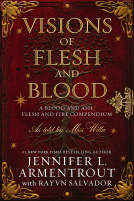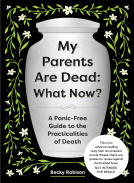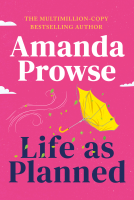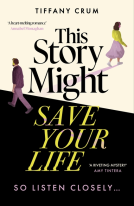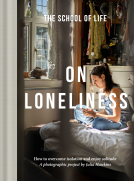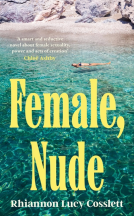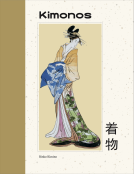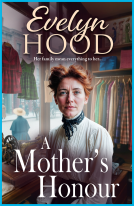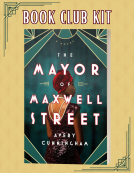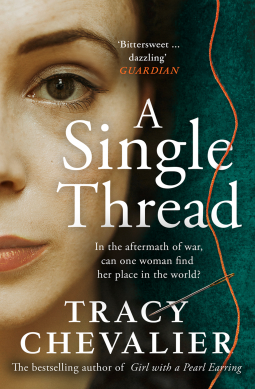
A Single Thread
by Tracy Chevalier
This title was previously available on NetGalley and is now archived.
Send NetGalley books directly to your Kindle or Kindle app
1
To read on a Kindle or Kindle app, please add kindle@netgalley.com as an approved email address to receive files in your Amazon account. Click here for step-by-step instructions.
2
Also find your Kindle email address within your Amazon account, and enter it here.
Pub Date 5 Sep 2019 | Archive Date 1 Apr 2022
HarperCollins UK, HarperFiction | The Borough Press
Description
FROM THE GLOBALLY BESTSELLING AUTHOR OF GIRL WITH A PEARL EARRING
‘Bittersweet … dazzling’ Guardian
‘Deeply pleasurable … the ending made me cry’ The Times
‘Told with a wealth of detail and narrative intensity’ Penelope Lively
Violet is 38.
The First World War took everything from her. Her brother, her fiancé – and her future. She is now considered a ‘surplus woman’.
But Violet is also fiercely independent and determined. Escaping her suffocating mother, she moves to Winchester to start a new life –a change that will require courage, resilience and acts of quiet rebellion. And when whispers of another world war surface, she must live with a secret that could change everything…
Available Editions
| EDITION | Ebook |
| ISBN | 9780008153830 |
| PRICE | £4.99 (GBP) |
| PAGES | 400 |
Average rating from 226 members
Featured Reviews
was actually quite surprised how much I enjoyed reading this. I did not think I would enjoy it as much as I have. i do enjoy reading books from this era and really enjoyed the journey
well done to the author
‘A Single Thread’ is a wonderfully written story, set in the early 1930s, which explores the lives of civilians damaged by the fallout of the First World War. At its centre is Violet Speedwell whose fiancé and brother both died during the War. Escaping her embittered mother, she moves to Winchester to live in a dreary boarding house. Busy with her typing job by day, on a whim Violet learns needlepoint so that she may contribute to Louisa Pesel and her broderers’ project in the cathedral.
Hardly a tempting synopsis, one might think. However, Tracey Chevalier’s storytelling is so subtle, so sensitive and so deft that the reader is quickly immersed in the world of respectable, dowdy 1930s provincial England where, below the surface, Fascism rumbles, depression is common, homophobia is rife and women are always seen as second-rate. Rather like Barbara Pym or Anita Brookner, Chevalier is able to take the mundane and elevate it to a thoughtful exploration of complex humanity. Her characters can be selfish, hypocritical, fearful and exploitative and yet we are made to understand why rather than encouraged to judge. At the same time, the author reminds us that people can be surprisingly resilient. Her men and women are able to change for the better, show bravery and patience, learn new skills and behave generously in the most trying of circumstances.
Winchester Cathedral is a character in itself and there will be many who will be tempted to visit this historic building after reading ‘A Single Thread’. When they have been so richly and intricately described on paper, who will be able to resist the opportunity to see Louisa Pesel’s beautifully designed needlepoint designs for real? Who won’t want to be called by the bells?
A beautifully told tale. At its conclusion, the author avoids sentimentality, yet allows some blessings to fall upon her characters. Meanwhile, on the continent Hitler rises, stormtroopers march and swastikas fly.
My thanks to NetGalley and The Borough Press, an imprint of HarperCollinsPublishers Ltd for a copy of this novel in exchange for a fair review.
 Helen K, Educator
Helen K, Educator
Such a lovely novel; gentle yet about a time - the 1930s - that was difficult, especially for the generation of women 'widowed' by the Great War. Violet Speedwell has ambitions, aspirations that are curtailed by the loss of a fiance; and decides to make her own life by not following society's expectations for a 'spinster'. She 'gatecrashes' the Winchester embroidery group, and this changes everything!
'A Single Thread' is beautifully written, compassionate about people whose lives do not follow society's norms - yet they are not wrong. It could be described as a 'woman's book', but not pejoratively; and I would recommend it to anyone who appreciates good writing.
 Kath M, Reviewer
Kath M, Reviewer
Through the eyes of Violet Speedwell this story considers the plight of the many women who, because of the deaths of husbands or fiancés in the Great War, found no obvious role in society. It’s set in the early 1930s. Men were so greatly outnumbered by women that the role of spinster mainly meant life in your parents’ home – a permanent childhood in a way – or working for a living on inadequate wages and living in a room in a lodging house. With her flaws and contradictions, I was rooting for Violet. Everything, including a monstrous mother still devastated by the loss of her elder son in the war, was stacked against her. She was her own woman, and I loved the way she dealt with the blows and didn’t lose herself in the process. She also befriended two similar aged ladies who became a lesbian couple. She was warned off being seen with them in case it affected her, too, as though it were a contagion. The world wasn’t ready to acknowledge that as a valid relationship at the time. It’s a great book which covers some important issues for that generation.
 Leanne N, Educator
Leanne N, Educator
What I love about Tracy Chevalier’s novels is the way she transforms the commonplace into the fascinating and A Single Thread is no exception. Set in the early 1930’s and following the deaths of both her brother and fiancé in 1917, Violet craves a life for herself away from her overbearing responsibilities as companion to her widowed mother.. She relocates from Southampton to Winchester where she joins a group of broderers to alleviate her loneliness through which Violet is introduced to the intricate beauty and art of bell-ringing. Thus begins her journey into a richly woven tapestry of new experiences and love, enabling her brave and socially controversial personal choices. Fascinating insights into Louisa Pesel, her broderers and her canvas embroideries still in use at Winchester Cathedral today.. A brilliant novel!
 Geraldine S, Educator
Geraldine S, Educator
This beautiful story is a homage to Winchester Cathedral and Louisa Pesel. I had not heard of Louisa before reading this book but as soon as I had finished 'A Single Thread' I started to investigate her life and work online. She was an embroiderer and teacher of considerable renown who among many other projects was responsible for the embroidered cushions, kneelers and alms bags in Winchester Cathedral. Louisa is not the main character in this historical novel, set in 1932 Winchester, by Tracy Chevalier. However she is a very central pin and comes across as a very sympathetic character who has been well researched by Chevalier. I loved finding an online photo of Pesel riding a camel, an event referred to a couple of times in the novel.
The central character is the fictitious Violet Speedwell, living initially with her mother following the death of her older brother and her fiancée during World War 1 and the subsequent death of her father. Violet's mother is overbearing and negative, restricting Violet's ability to have any kind of life. So Violet makes the decision to move to Winchester where she lives in a boarding house for ladies, works as a typist, finds embroidery and bell ringing, very good friends and a full life. Violet, her family and the characters she meets are all carefully created and I got a real feel for many of them, as Chevalier uses dialogue very cleverly to develop her characters.
The 1930's setting is well researched and described, giving insight particularly into attitudes to single women and the lasting impact of war on a generation. The threat of HItler and fascism is in the background of the book but does not dominate the narrative.
By the end of this lovely book I not only wanted to find out more about Louisa Pesel but also am looking forward to revisiting WInchester Cathedral with newly informed eyes and perhaps to trying out some embroidery, though I think I'll leave the bell ringing for now.
 Heather R, Reviewer
Heather R, Reviewer
I loved this book. Tracy Chevalier conjures up the 1930's beautifully, and we are reminded that this was not an easy time to be an unmarried woman, without money. She conveys very well what it is to be hungry, and cold, and a second-class citizen in a man's world. But the central character Violet isn't a character to be pitied. She makes a life for herself, on pretty much her own terms, and throughout the book the reader is full of sympathy, and empathy for her. The book has made me want to visit Winchester, and its cathedral, and also read those of the author's books that I haven't already read. I will definitely be recommending this book.
 Maureen M, Reviewer
Maureen M, Reviewer
A Single Thread is what I would call a quiet book. There are no twists and turns, no showy structural points, no shocking revelations. It's a lovely book about life between the wars and how the first world war affected so many people. I loved it.
Violet Speedwell lost her brother and her fiancé during the war. Now 38, her father has died and she is determined not to continue living at home with her mother who constantly niggles at her. She moves to Winchester and seeing the embroidered kneelers in the cathedral there she decides to learn to stitch. Life as a single woman is hard. She barely has enough to live on but the freedom she has is worth the sacrifice and eventually she finds love though not where you might expect.
There is a lot about embroidery in this book and bellringing. I love it when I can learn about something new when reading fiction. But it is the characters who shine. They are all fully developed and well drawn to the extent that I wanted to strangle Violet's mother at times! Thanks to NetGalley and the publishers for the ARC.
 Book B, Reviewer
Book B, Reviewer
IF you’d told me that a book about embroidery and needlepoint of tapestries and prayer stools set in and around Winchester Cathedral would be intriguing then I might have given you a funny look and doubted your judgement. When it’s the subject of a Tracy Chevalier novel however, it’s so much more than the sum of its parts and manages to weave its own kind of magic.
Novels which take a real person or persons and fictionalize their story whilst bringing in the historical aspects, political intrigue and battle of thje sexes of times gone by are fascinating to me. It’s that idea of seeing an historical object or something old like a picture, prayer stool or wooden seat and imagining the fingerprints of time dotted across it just waiting to be discovered. This gives me all the feels and it’s like stepping back into a time machine and seeing history come alive.
The writing is also sublime as always. Tracy sets this story in the 1930s, the fall out of the First World War. She integrates herself into the lifes of the women who learn needlepoint to be able to join the broderers group who work in the cathedral. Louisa Pesel was the head of this group and was a real life person!
It’s from then on that we are totally and utterly immersed in the lives of these women. Women who were expected to behave, to stay in their place, to expect the mundane and accept their lot in life. Women at that time largely outnumbered men after the devastation of war, but women were still not considered vital in many ways. This is explored in the novel and it’s sobering to read so many years later.
Despite the depression and the rumbles of another war, these women show amazing and admirable resilience. That is the story here and what a story it is.
Tracy writes at the end how the needlepoint seats are still there in Winchester Cathedral and there is also a chance to see work elsewhere. After reading this novel I’m going to try and go there if only to mentally shake hands with these women and their resilience when the world was as dark as it’s ever been.
 Rogan R, Bookseller
Rogan R, Bookseller
Now, I'm not the target audience for this book. This book is set in the early 1930's about an unmarried thirty something woman who has suffered great losses, who is a typist and the book heavily features cathedrals, embroidery, bell ringing and holidays. I am a gay married man with a child, who likes eating twix chocolate bars and playing Mario games. Hey, we're the same age at least.
But. Having never read a Tracy Chevalier book I wasn't aware that her writing could wash away my scepticism within mere pages. She makes Violet come alive, she is flawed but strong, and her struggle to be free and independent is something you really root for.
I genuinely never thought stitching a kneeler for church could be such a well of emotion and drama, but I thoroughly enjoyed this book. Also impressive was the firm sense of place and time. Despite the obligatory Nazi foreshadowing (surprisingly the least interesting part of the book), this is a vivid picture of a society on the cusp of change when it comes to feminism, LGBT issues and emancipation.
I expected to leaf through a standard romance, but I ended up avidly reading a charming, involving, relatable story.
 Teresa C, Educator
Teresa C, Educator
A Single Thread by Tracy Chevalier
This new novel from one of my favourite historical writers shows the depth of research which she undertook to bring Britain in the 1930’s alive for her reader. Violet Speedwell is one of the “surplus women” of the period whose fiancé had been lost in the war. She has reached the age of 38 and finds life with her cantankerous mother stifling and so determines to make a life for herself in Winchester. Her financial circumstances are clearly conveyed through the descriptions of her weeks of living on paste sandwiches.
Her decision to move to Winchester brings her into contact with the cathedral Broderers and the description of the painstaking work to create the cushions and kneelers for the cathedral are beautiful. She also develops an interest in campanology (and a particular bell ringer) and this too is described in fascinating detail.
This novel, based on real characters is engaging and paints a wonderful portrait of a lost time and also the way in which people reacted to those involved in less conventional relationships.
This was a highly readable and very pleasurable novel. My thanks go to Net Galley and the publishers for the opportunity to read this book in return for an honest review.
In a world that increasingly appears to be going mad this book is a soothing, calming balm! The story is a gentle book about a bye gone age when societies rules and foibles are strictly obeyed. Tracy Chevalier is an author who can create a picture, a character and an atmosphere effortlessly. The main character is Violet Speedwell and the era is the early 1930’s, the setting is principally the Winchester area and much of the focus is on the cathedral. Violet is a lovely character although the book has a number of great characters some very likeable (Tom, Arthur, Miss Pesel, etc) and some less likeable such as Violets moaning minnie of a mother. Violet has known great sadness as her fiancé and brother were killed in the Great War but she is trying to get her life back on track and the Winchester Broderers and bell ringing are very key in that recovery. I found the embroidery aspect fascinating (though I have zero ability with a needle being totally cack handed!) and a lot of this aspect of the book is grounded in reality and much of the work referred to still exists in the beautiful cathedral.
I love the gentle humour in the book and there are some lovely and absurd stories that are so ridiculously English.!There are moments of menace too and Violet shows just how self possessed she can be at times like that. Society of the time is well depicted too especially people’s attitudes to same sex relationships and unmarried mothers although some characters refuse to bow to the conventions of the day. There is unrequited love but healing too as Violet is able to move on from her losses and in her own inimitable way finds solace. The ending of the book is lovely and optimistic albeit with the spectre of Hitler hanging over the world.
Tracy Chevalier is a wonderful author and it was a privilege to receive an early copy of this book.
I adore Tracy Chevalier's books and couldn't wait to read this one, which jumped straight to the top of my TBR pile.
A Single Thread is set in the 1930s, when single women were considered 'surplus' because so many men of that generation had died during the First World War. Violet Speedwell lost both her fiance and her brother. After years being worn down by her mother's relentlessly negative comments and outlook, Violet realises she has to make some drastic changes to her life. She starts by moving from Southampton to Winchester and taking on a new job. At first she is lonely, as the women in her office are much younger and they don't seem to have anything in common. But she relishes her independence and soon makes friends with a group of women who embroider kneeling cushions at Winchester Cathedral. Yet soon the threat of another war looms.
While I love historical novels, I hate sewing and anything 'crafty', so in theory I'm not the target audience for this story! However, Tracy's skill at creating fascinating characters soon drew me in and I couldn't put the book down. I particularly loved Violet's fellow 'broderers'; Gilda and her sweet love affair with Dorothy, and also Louisa, who rebelled against the Nazis in her own unique way. I know Winchester and the cathedral very well, and enjoyed reading about all the familiar landmarks. The only thing I wasn't so keen on was the man Violet became obsessed with, as I didn't feel he deserved her. I did like the ending though!
I really enjoyed reading A Single Thread, which is almost a love letter to Winchester Cathedral and the unsung heroes who have worked there over the centuries. I can see it appealing to anyone who enjoys historical novels, particularly those set in the early 20th century.
Thank you to Tracy Chevalier and The Borough Press (Harper Collins UK) for my copy of this book, which I requested via NetGalley and reviewed voluntarily.
Violet Speedwell is a woman in her later 30s who is trying to make her way in the world, at a time when women had very little freedom and when men were scarce following on from WW1, when so many had been killed. Her existence, as it was for many unmarried women, was pretty much hand-to-mouth, as women took jobs whilst waiting for a marriage proposal to knock on the door. If they didn’t come, what then?
Women were expected to care for their parents, they were not expected to go out much on their own. The rigours of society were such that women were stifled and had to adhere to norms imposed by a masculine hierarchy. Violet and her friends are, however, not going to remain sequestered in a humdrum lifestyle.
Having moved away from her über-critical mother in Southampton, Violet takes lodgings in Winchester with some other young women, a very formal set up watched over by redoubtable landlady Mrs Harvey. She also finds herself a typing job, working alongside O and Mo (Olive and Maureen) in an insurance company.
A serendipitous visit to Winchester Cathedral finds her spell bound by the work of the broderers, who are sewing beautiful designs onto kneelers and seat cushions to soften the hardness of the spiritual experience. After a few test runs and eagle-eyed evaluation of her handiwork, she is welcomed into the community and it becomes a regular part of her life. She meets Gilda and her friend Dorothy and forms a firm friendship. The broderers’ work is carried out under the watchful eye of Louisa Pesel, a real person in history.
She also meets bell ringer Arthur who regularly rings both at the Cathedral and in Nether Wallop but he is already married….
Circumstances lead her to choose to go on a walking holiday, once again something that is not quite proper for a young woman to do and she frightens herself witless when on a lonely stretch heading South she comes under the scrutiny of a ne’er do well who dogs her life as she forges her way through constraints, just trying to live her life.
This is a wonderful, gentle novel that takes the reader back to an era of stoic hardship and repressive manners. Violet as a person is beautifully formed and I certainly rooted for her to cleave her way through these tough times. It started off fairly slowly which may lose some readers, but I found it engrossing to follow Violet’s life. I really wanted to know how things would turn out for her. You will learn much – and delightful learning it is too – about needlework and bell ringing and discover more about fylfots and Thomas Thetcher’s grave (who died of a violent fever contracted by drinking small beer when hot… in 1764).
As always, the author’s writing is eloquent, engaging and wonderfully observant of era and place, with tension and humour making this a very rounded and satisfying read. The author first came to my attention with Girl with the Pearl Earring which wonderfully evoked Delft in the 17th Century.
The author also shares with her readers at the end, that Keith Bain bought the privilege of having a character named after him (in the novel he is a friend of Arthur’s) at an auction to raise funds for Freedom From Torture.
 Katharine L, Media/Journalist
Katharine L, Media/Journalist
Violet Speedwell is, like many other women after World War One, a spinster. Having escaped from her mother's house, she has moved to a rented room in Winchester and found a job, albeit one she finds rather dull. One day, she is passing the cathedral and notices a service of dedication for embroidered kneelers; intrigued, she goes along to one of the group's meetings and becomes a 'broderer'. Through the group, she meets more people and develops a social life in Winchester, meeting people who she would not have encountered had she remained in Southampton caring for her mother.
The 'thread' reflects her embroidery, but also the connections she makes and the path her life takes in the years leading up to World War Two.
This is a really good read, illustrating how many women's lives were changed by the immense death toll of the Great War.
 Olga N, Reviewer
Olga N, Reviewer
I thank NetGally and The Borough Press (Harper Collins) for providing me an ARC copy of this novel, which I freely decided to review.
I only came to Chevalier’s books quite late (I hadn’t read any of her novels until I caught up with At the Edge of the Orchard, which I loved and whose review you can read here), but I’m fast becoming a fan of her way of bringing history to life and immersing us in worlds that many of us might know little or nothing of and managing to grab our attention and to teach us invaluable facts at the same time. This novel is no different. Although we revisit a historical period that is much closer than those she has visited in other books (the story takes place in the UK the early part of the XX century, in between wars), once we get into the story, we soon discover that things have changed more than we might realise. The social mores of the era seem light years away from ours (although perhaps not everywhere and not for everybody), and, although told in the third person through the eyes of the narrator, Violet Speedwell, we learn what being a single woman (‘a surplus woman’ as the novel explains) was like at the time.
Violet, the protagonist, is not the most glamorous and exciting character I’ve come across. She is not special in any way, and that is what makes her story particularly representative of the period. As she often observes, there were many women who had lost male relatives, husbands or fiancées (she lost her older brother and her fiancée) during the Great War, and this generation of women are struggling to find a place for themselves. Some might go on to marry, but others… what kind of life awaits them? Although the style of writing is completely different, the sharp social observations put me in mind of Jane Austen and her novels. (Of course, Jane Austen is buried at Winchester Cathedral, so it all seems to fit). Violet leads a life where she is always conscious of other people’s opinion, of what her mother will think, of what will happen to her in the future (will she end up having to go to live with her younger brother and become the spinster aunt to his children?), of whose company she keeps… And once she leaves her mother’s house and goes to work and live in Winchester, she even has to be careful of how much she eats, as her salary won’t allow for any luxuries or even a hot meal per day. She is far from a conformist and has her moments of rebellion (she has her sherry men), but she is not open-minded or up in arms, at least not when we first meet her. By chance (and due to her love for Winchester Cathedral, inherited from her father, the most significant person in her life) she discovers the broderers, a group of women dedicated to enhancing the cathedral with their embroidery (when you read the author’s note you discover that the group existed and its main character, Louisa Pestel, was a historical figure whose archives are now at the University of Leeds), and although she knows little of embroidery, the thought of making a contribution to such a building and leaving her mark drives her to join in. Although not all is goodwill and camaraderie in the group, it changes Violet’s life, and she and us, readers, meet many other characters that give the story its depth and a strong sense of place and historical truth.
I love the way the author introduces details of embroidery (needlepoint), bell ringing, the history of Winchester Cathedral, and even the landscape of the city and the surrounding area, into the novel seamlessly, without making us feel as if we were reading a touristic guide or a history book. (She brings together all the threads like a skilled embroiderer herself). She is also proficient at descriptions that enlighten without becoming repetitive or overbearing. I get the feeling that she would be an incredible teacher and she’s hold her students enraptured by her words, the same as she does her readers.
The characters are recognisable as types, but they manage to surprise us as well, and the little details she mentions about them and about their behaviours and reactions make them true and genuine, even those who don’t feature prominently in the story. As the story is told from Violet’s point of view we sometimes get biased opinions about the characters, but we also get to see how she changes her perspective when she gains a new understanding of what life might be like for others, and we share in her progressive enlightenment and her new (and more generous) view of things. By the end of the novel, Violet is a totally new person and her life has changed beyond all recognition. Is it a happy ending? Well, I guess it depends on your definition of happiness, but she’s sure come into her own, and I enjoyed it. Do read it and see what you think!
I thought I’d share a few quotes from the book, to give you an idea of what you might find. (I recommend you check a sample of the novel to see if it’s a good fit, and remind you that I accessed an ARC copy, so there might be some changes in the final published version).
Women always studied other women, and did so far more critically than men ever did.
An invisible web ran amongst the women, binding them fast to their common cause, whatever that might be.
It was expected of women like her —unwed and unlikely to— to look after their parents.
She was from an era when daughters were dutiful and deferential to their mothers, at least until they married and deferred to their husbands —not that Mrs Speedwell had ever deferred much to hers.
This is neither a page turner, nor a book for those who love non-stop action. There are adventures and surprises, but those are not earth-shattering but rather in keeping with the main character and her milieu. This is a story centred on the everyday life of a woman in the early 1930s in England, at a time when the country was starting to recover from a war, and people were already worried about the events taking place in Germany. It is a novel about how far women have come (at least in the West) or not, about how some things don’t change easily, about the small acts of rebellion and about finding your own place, about being creative in your own way (both the broderers and the bell ringers made me think of Alice Walker’s In Search of Our Mother’s Garden), and about ensuring your voice is heard. It is a novel of manners for the XXI Century, and much, much more. I was enchanted and entranced by it, and I recommend it to people interested in Women’s History, UK recent history, the social history of the interwar period, embroidery, bell-ringing, Winchester Cathedral, and good writing.
 Robin B, Librarian
Robin B, Librarian
An interesting portrait of some of the 'surplus women' during the '30s, left without husbands due to the number of men killed in World War 1. Tracy Chevalier always writes beautifully and this story is no exception. Violet spends most of the story trying to carve out an identity for herself that is separate from just being a spinster and carer for her mother. The intricate detail of the embroidery that she learns made me want to pick up a needle and thread and learn myself. The whole book was a fantastic look into the lives of these women who were trying to live their lives in a much more modern way despite society's disapproval.
 Aidan D, Educator
Aidan D, Educator
Brilliant depiction of thirties Britain, this story follows the life of Violet whose brother and fiance died in the Great War. She moves away from her controlling mother and finds companionship in a cathedral, embroidering hassocks and meeting the bellringers. The challenge of making a life for the women who were left by the slaughter of their men in the war has not been written so well if at all. Probably her best book so far.
 Philipa C, Reviewer
Philipa C, Reviewer
There isn't much that Tracy Chevalier writes that I don't love! She will often grasp a painting, a tapestry or a person and bring them to life in a fictional masterpiece.
Here I little thought I would become intrigued (as does Violet in the story) with the beautiful sewing needed to make the knee cushions for a church - or in this case the majestic Winchester Cathedral. Having visited Winchester the cathedral (home to the burial site of Jane Austen) the author superbly describes the architecture and evokes a spiritual link between those surviving now and those that have passed over time.
Beautifully written love story with an unusual twist - like the very skeins of thread themselves!
 Val B, Librarian
Val B, Librarian
Set in 1932, this is a story of Violet Speedwell, like many women of her generation, she is considered surplus to requirements due to the shortage of young single men (her fiance Laurence waskilled in the Great War. She is trapped at home living with her peevish and demanding mother. The story unfolds as she escapes from her mother and is drawn to the craft of embroidery and learns how to make the kneelers and cushions for the cathedrel in a nearby town. The book explores many themes, including, lesbianiism. A wonderful gentle book about the plight of women and the lack of opportunities they face. Tracy Chevalier is a wonderful writer and I really enjoy reading all her novels
Readers who liked this book also liked:
Jennifer L. Armentrout and Rayvn Salvador
Reference, Romance, Sci Fi & Fantasy
Becky Robison
Business, Leadership, Finance, Parenting, Families, Relationships, Self-Help
We Are Bookish
Historical Fiction, Literary Fiction, Multicultural Interest
